The Hearthersfǫr - Days of Winterlight Angels
The Hearthersfǫr or "Days of Winterlight Angels" is an ancient Nordic tradition still practiced to this day. As the defeat during the Reshaping of the World had relegated the tribes of the Nordmen to the hostile regions below the Snowzone, winters would hit many Kaltani, Gallian, and Skôtish tribes especially harshly. The Angel Saxons, children of the Albenmannen, were of course rather well off in their lofty halls of stone, warmed by forge fires and magic. But such is not the way of the Angel Saxons to tower high above their kinsmen and ignore their plight, and with their Magic and the Kaltani druids, they formed a special procession in those early winters, one that would recur every year without fail for thousands of years: the Hearthersfǫr, the Journey of the Hearth, or - as it would later become known - the "Days of Winterlight Angels". While the larger towns, castles, and of course the lands of High Saxia were stocked up and protected well enough to withstand the extreme cold and encroaching glaciers that began their deadly march in the late months of the year, smaller villages and settlements were not as well equipped to survive the onslaught of deep winter. Most of those relied on aging local druids to thwart approaching glaciers and swell waning fires with their ancient magic, but such druids did not live forever, and when one died, a settlement did not always have a suitable replacement. Each winter could have been their last in those early days. The Hearthersfǫr procession would see skilled druids, led by Angel Saxon mages, journey across the North and see that Nordmen settlements had the magic they needed to survive the deadly season.
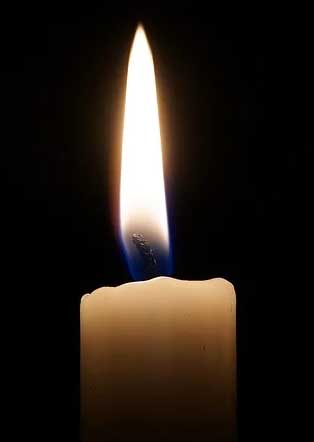

Candle Sticks
"Glass and ice grow thick alike" is a common saying in the North, for as the cold winds blow down from the Snowzone during the approaching winter, the Gallian glass makers that predominantly live north-east of the Yamato Kingdom sell the most product. During the bleak northern months of autumn, peddlers from the Kaltani tribes and Skôtish settlements make their way east to Gallian territory to buy up all the glass they can, often selling beeswax and mead in turn, products best come by among the Kaltani. But why the glass?Well, as the looming presence of the snow comes ever closer to the huts of small villages and townships in the North, the need for the Hearthersfǫr grows ever more pressing, and in old tradition, when the cold and ice becomes too much of a threat for local druids to handle, long pikes are driven into the ground with glass-shielded candles at their top. Often dozens of these are planted all around the outermost houses and kept lit for as long as it takes to attract the attention of the mighty Angel Saxons, who scour the North for those who need their magical prowess to stay safe and warm.
"Let little lights guide angels hither from the skies..."
The Three Flights
The Three Flights of the Hearthersfǫr are comprised of Angel Saxon specialist mages, each of whom perform one kind of Elemental Magic.The Glacier Breakers
The Glacier Breakers of High Saxia are among the most awed at mages of the Angel Saxons; at least among the other Nordmen tribes. Their superior command of water magic allows them to plant their feet before the mighty Snowzone and rebuke the encroaching glaciers into halting their advance. Woe to those hillock villages and mountain towns that have to face the mighty ice without a Glacier Breaker to shield them, for whole communities sometimes have to abandon their homes and hearths when the ice comes, and sometimes it comes so quickly, they vanish from the face of Aqualon altogether...
The Spring Callers
The Spring Callers are a more subtle breed of fire mages, often not interested in the swelling of forge fires as so many Angel Saxons who pursue the art are. No, a Spring Caller understands the sublime fire that burns in all things, the very motion of the tiniest parts of nature. They know how to tease and agitate them, how to bring warmth to the coldest of places and bring winter to heel. When the hearth-fires flicker against the cold, it is the Spring Callers whose arrival will make them roar again, and long-frozen ground will thaw even in the dead of winter, once a Spring Caller has tread on it.
The Storm Tamers
Glaciers will break and cold will fade before the other two, but woe to them if a true blizzard elects to cross their path. Only if a Storm Tamer is by their side, will winter's coldest blow be thwarted, for the wind magic of a Storm Tamer can do much more than blow snow off a laden roof. When shingles quiver and take flight, and ghastly snow whips icy tendrils through the night, that is when the Storm Tamers chant the Albenwords of yore and quell nature's rage, caressing her gentle cheeks until the mightiest huff becomes a blown kiss.I was a druid once, in charge of a village. But when the Great Winter of 1304 blew across the land, I could not withstand its mighty fist. So great was the plight of the Northerners, and even of the Middlish Men to whom the glaciers stretched out in that year, that the Flights of the Hearthersfǫr could spare no magus for a village known to already have its own druid. What eternal shame it brought to me to see my kinsmen freeze to death in the dead of night... Finding immortality in the heart of that tree has never lifted this burden from my soul. It only forced me to carry it within until this world itself dies. A fitting punishment for one such as I.
The History of the Hearthersfǫr
After the Reshaping of the World, those who would become the Nordmen of today were a devastated scattering of tribes, the mighty Albenmannen and their masters, the Aesir, brought low by the Faceless Worldshaper and his allies. Asgard had been excluded from the shaping of the planet and had instead been planted onto the surface of Aqualon's new moon. Here, the now Old Gods had a whole Kingdom to rebuild out of the ashes, a monumental task that took them hundreds of years during the dawning of the First Age. Meanwhile, the Albenmannen used incredible magic to carve their new lands of High Saxia out of the mountains of Aqualon, forming a grand kingdom apart from the world and thus mimicking their masters. But not only Albenmannen and Aesier fought and lost against the Faceless Worldshaper. A small portion of the Midgardmen refused to join the strange magus and Yilik, instead standing with then Godking Odin. And with them came the Jöten, hardy hunters and trackers from the icy realm of Jötenheim. The Jötenbrud and god-serving Midgardians did not possess the magic required to do as the Albenmannen did, and a great magic contract drawn up between the Faceless Worldshaper, Yilik, and Odin bound them all to the northernmost stretches of the world, granting them free reign over the uninhabitable Snowzone and the cold and harsh lands below, which is where they made their home. These first decades after the Reshaping were among the harshest for the new Nordmen. Jöten schamani were the only ones with the magic power to defend against the icy winter winds, though that power was still greatly lacking at the time. For this reason, the Nordmen tribes would venture east and west during the months of summer and spring, foraging and hunting and even building summer homes around various lakes that showed promise, but always they would return to the great Odenwald during the months of Autumn so that they could huddle together come winter, joining the magic of each tribe's druids to fend against the cold. This way it remained for hundreds of years while the Nordmen slowly grew back to strength, albeit never their former glory. So they began to dare more, build settlements further and further apart, and venture South during the warmer months to pillage and wage war against those who would become the Middlish men, the Yamato folk, the Brammir, the Estverdians, and the various small tribes between them. Come winter, they would retreat with the stores they had plundered and shell themselves against the ice as best they could, but the thinner they were spread, the more often singular druids and their inexperienced apprentices would falter and villages forever vanish in the white snow. It was then that Jürgen, ancestor of Jörg the Greater, a tall fellow of Jöten ancestry and high regard among many Nordmen tribes, made his way into the magic mist that hid away High Saxia.He sought out the Angel Saxons for twenty days and twenty nights without rest, it is said, before they granted him an audience. And in the stony halls of High Saxia did he plead the case of his people, the former brothers and sisters in arms of the Angel Saxons who had then been the Albenmannen.
So did he move them that they granted his request and would bring their magic down to the Nordmen come winter, shielding them from the icy death that always loomed. When the Angel Saxons came, all along the North people rejoiced and welcomed them into their humble halls, breaking out in great revels that would recur year after year with the coming of the Angels. This was the beginning of the Hearthersfǫr.
So did he move them that they granted his request and would bring their magic down to the Nordmen come winter, shielding them from the icy death that always loomed. When the Angel Saxons came, all along the North people rejoiced and welcomed them into their humble halls, breaking out in great revels that would recur year after year with the coming of the Angels. This was the beginning of the Hearthersfǫr.
The Gēolatide
What began as the Journey of the Hearth, the Hearthersfǫr, heralded new customs of celebration and merriment during the winter months, which grew to a first crescendo when during the year 892 FA1The First Age.
Allfather Odin himself, accompanied by his sons and a party of Angel Saxons, made his way into the Odenwald to Fort Elaine, which stood there long ago, ages before the great Albeney Castle was erected, surrounded by a small lake town.
There he feasted with the local Skôts and went on lavish hunts with them, moving on westward to visit Kaltani tribes in a like manner. The coming of Odin brought great joy and awe to the Nordmen, and thereafter he would bless them with his presence during the Hearthersfǫr once or twice a decade, prompting his subjects to name the time of year Gēolatide, the hallowed festive time.
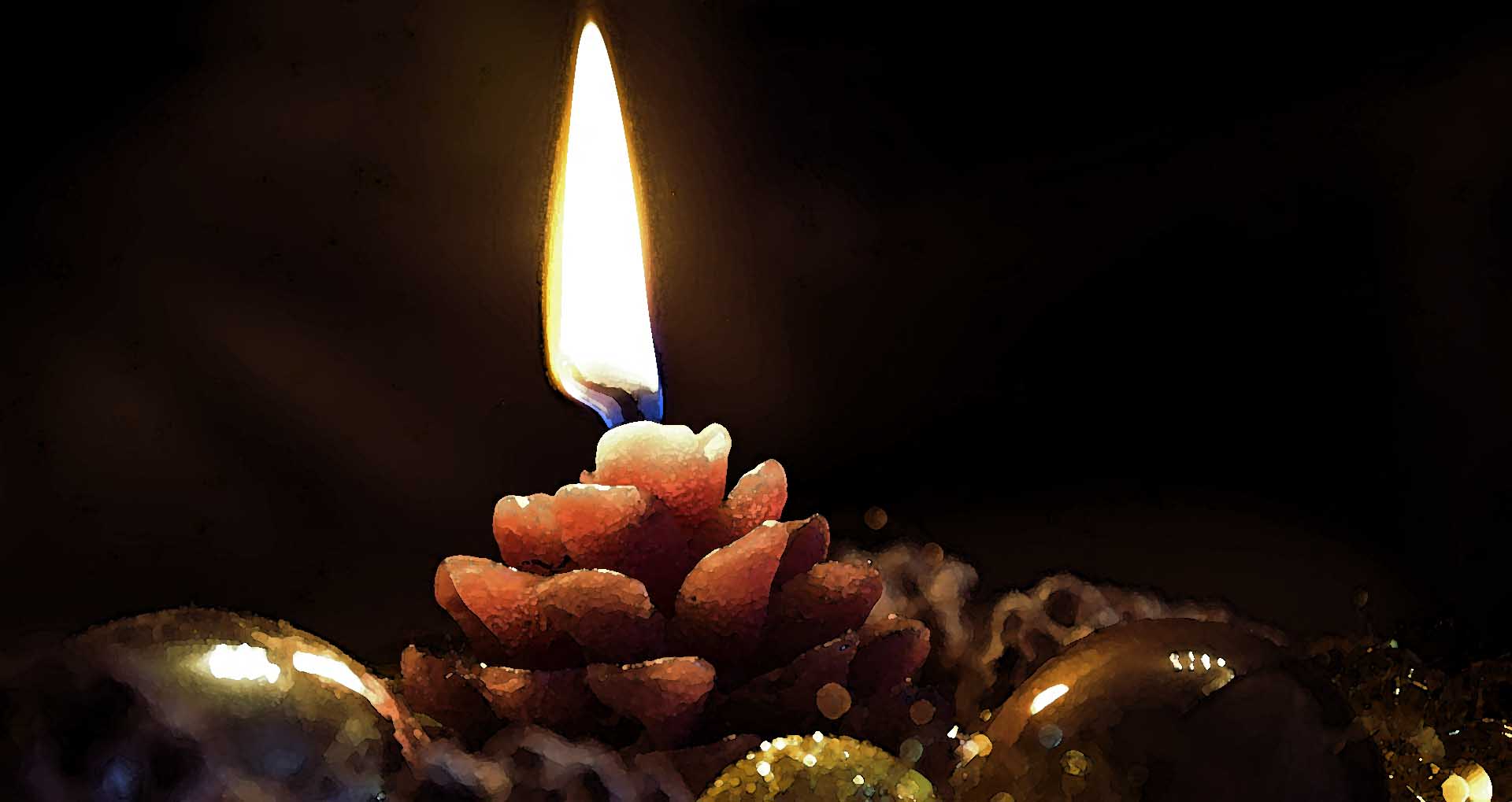
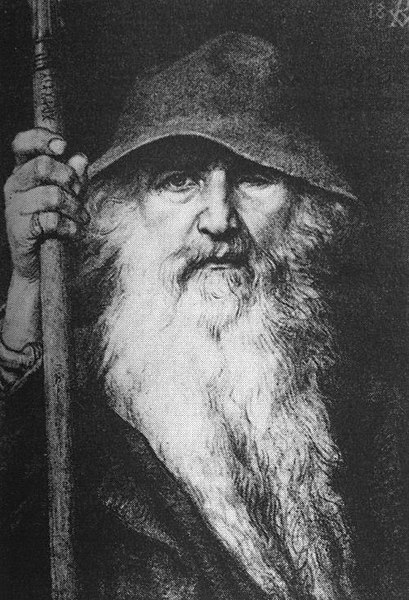 | Crows and ravens, too, while honored throughout the year enjoy special celebrity during the Gēolatide and villagers are sure to feed them an offering of crumbs and dried fish during the cold months, often even building little Odenshrines for them where they could drink water, eat seeds, and take shelter from the elements. It has been considered an auspicious omen long hence when many crows and ravens gather around squares during cold winter days as people believe it to be a sign of Odin's presence nearby.It is said that Odin was the first to unleash the magic of anima, bending his soul towards the black birds in the sky, making them pay homage to him and, later, do his bidding... |
The First Invasion
When the First Invasion heralded the Great War during what is now known as the Age of Heroes, winter was one of the main concerns of the attacking Nordmen and Old Gods. They knew that if they remained walled off below the Snowzone during the coldest months, one of their most powerful magical forces, the Three Flights of the Hearthersfǫr would be tied up fighting a twin war against both the encroaching ice and the people of the Great Land, who surely would send their mages to wreak terrible havock among the tribes.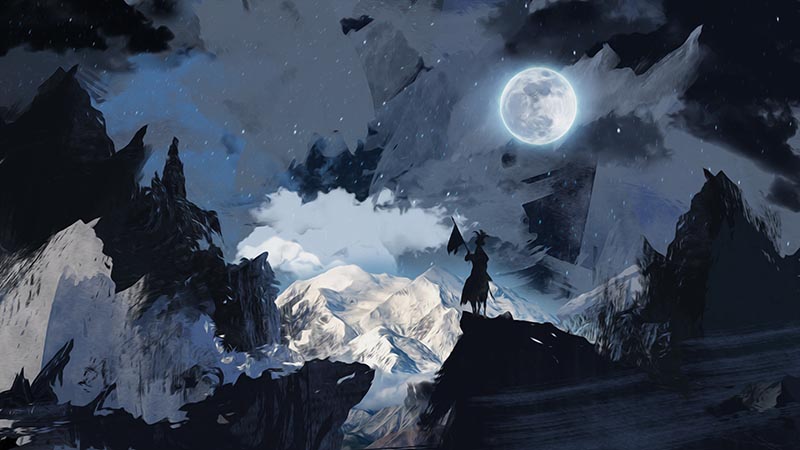
A Festive Season
Though the harshest and most dangerous time of the year for the Nordmen, the coldest weeks between the months of Decarion and Yanwhe are often filled with revel and celebration among the Nordmen, all the more so the larger the community, for there is strength in numbers when the cold winds blow.
Gēolatide Decorations

Customs of the Hearthersfǫr
A Place at the Table
Even today and in places where the Angels need not descend do people carefully set an extra plate around their table during the winter months, should one ever knock on their door and ask for a warm meal and place to spend the night. And the custom has somewhat evolved since the First Age, so that it is considered a great offense to the Old Gods to turn any wanderer away that should knock during this hallowed time, owing in large part to the Kaltani edda of Orgwendl, which tells the story of an Angel Saxon who had lost his insignia and luster in a storm and was turned away from many doors when seeking shelter after thwarting a terrible blizzard that had threatened all. The story goes that when a second blizzard came, he was so tired and hungry that he could no longer defend the village and was taken by the ice along with them.
Bee thee Honored
Not only are the Hearthersfǫr candles made from beeswax, but the honey and mead made thereof provided by the industrious insects are prized and beloved by Kaltani, Skôts, and Gallians, albeit the Kaltani reign supreme among beekeepers, having developed the most hardy and high-yielding apiaries among all the tribes. When the bees go to sleep, the apiaries are carefully insulated and protected against the cold to ensure their survival, and druids will bless them periodically with magic of anima so that they may be proofed against the cold. To honor the bees during the Gēolatide, apiary-styled hats are crafted from twigs and a plaster-like pasted made from special plant ash. These painted hats are worn on certain feast days during Decarion and many bee-themed games are played be the children and bee-themed songs sung.
The Gēolatide Songs
But not only bees are honored in song. Kaltani, Skôts, and Gallians sing of the valiant and magically apt Angel Saxons throughout the winter months, lauding their great power and generosity. And the gods too, while honored throughout the year, are afforded special Gēolatide songs that speak of their visits during the days before the Great War, of Odin's great hunts, and the presents he brought from far-away Asgard.
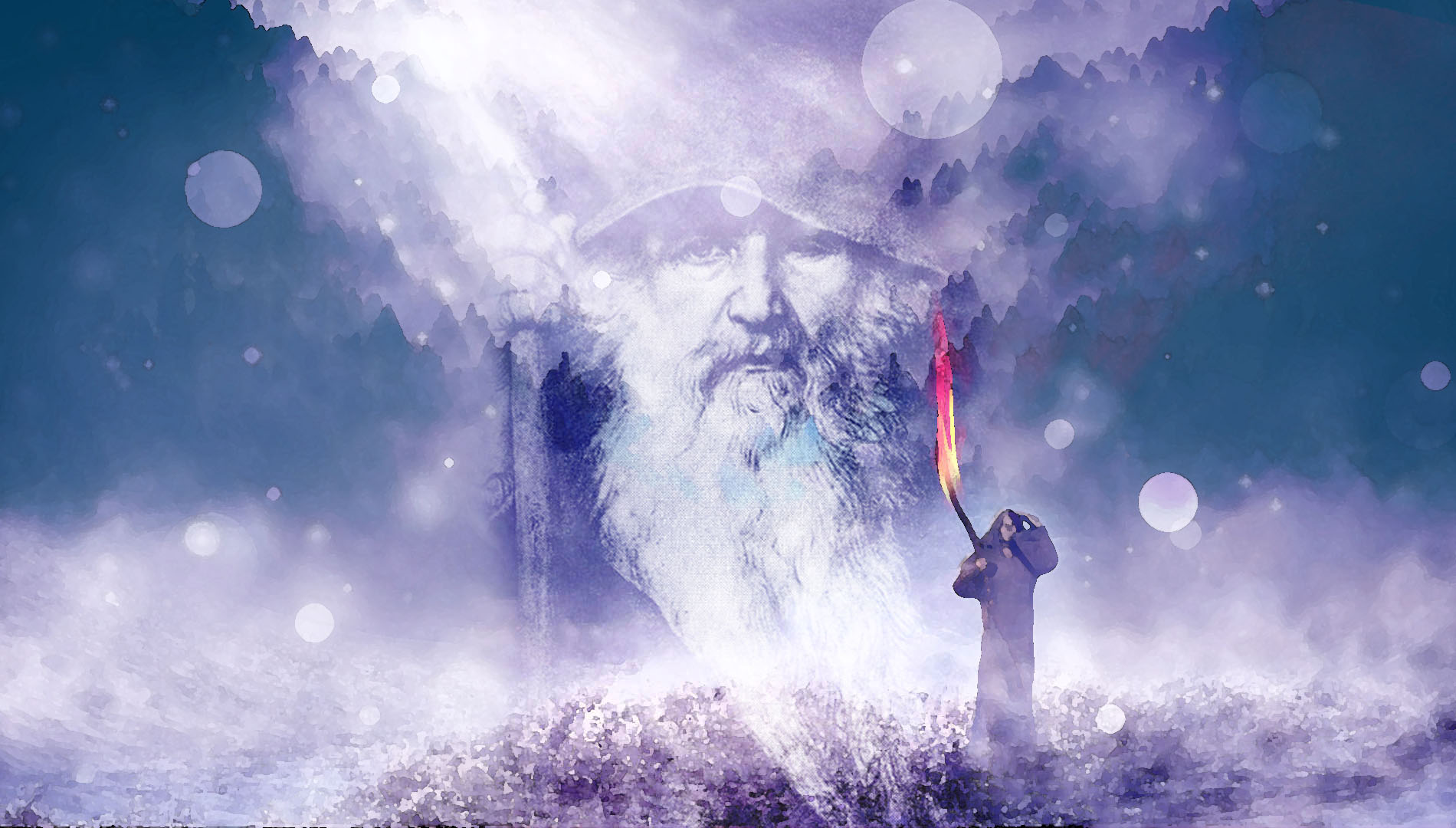



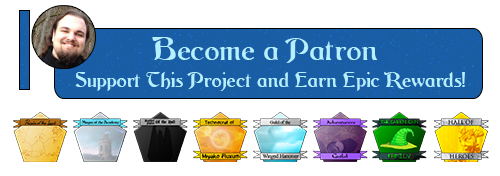
Comments